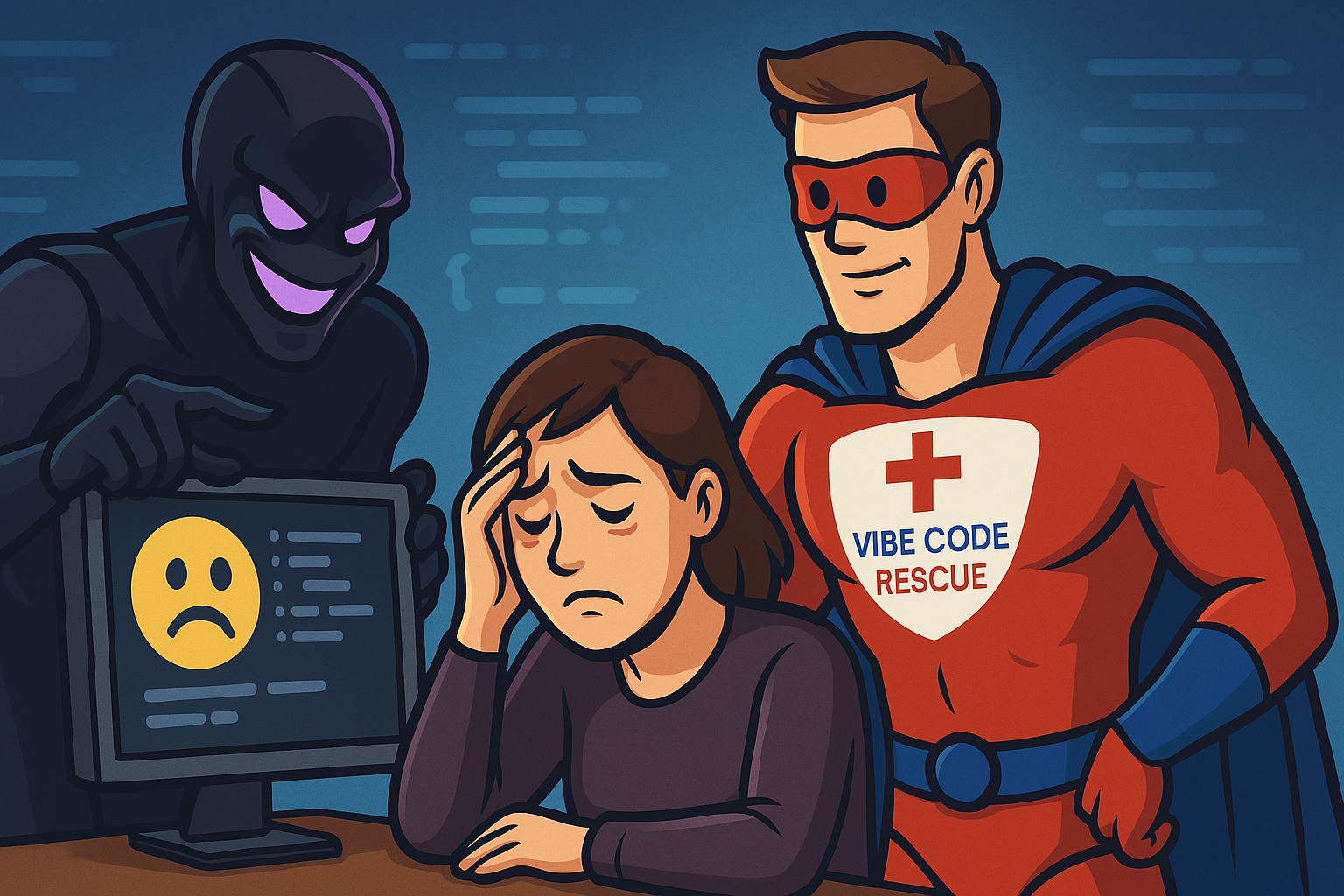AI coding tools are revolutionizing the way we develop software. From generating boilerplate code to suggesting solutions for complex problems, they’ve become indispensable for many developers. But while these tools are fast and efficient, there’s one thing they’ll never be able to do: empathize with your users.
Your users aren’t just interacting with code—they’re engaging with an experience. And when AI-generated code lacks the human touch, it often fails to address the subtle nuances that make software truly user-centric. This is where the gap between "functional" and "exceptional" becomes glaringly obvious.
In this post, we’ll explore why AI assistants fall short when it comes to understanding user pain points and how Vibe Code Rescue bridges the gap to create software that resonates on a deeper level.
The Emotional Disconnect in AI-Generated Code
AI coding tools like GitHub Copilot or ChatGPT are trained on vast datasets of existing code. They excel at identifying patterns and producing solutions based on statistical probabilities. However, this approach has significant limitations when it comes to creating software that truly connects with users.
1. AI Lacks Contextual Awareness
AI doesn’t understand your users, your business goals, or the unique challenges your application is trying to solve. It generates code based on what’s most likely to work in general scenarios—not what’s best for your specific audience.
For example:
- An e-commerce platform might need a checkout process optimized for speed and simplicity.
- A healthcare app might prioritize accessibility and data security over aesthetics.
AI can’t intuit these priorities without explicit instructions, and even then, it struggles to adapt its output to nuanced requirements.
2. No Empathy for User Frustrations
Human developers bring empathy to the table—they can anticipate user frustrations and design solutions that minimize friction. AI, on the other hand, lacks the ability to "feel" what a user might find confusing or frustrating.
Consider error messages as an example:
- A human developer might craft a helpful error message like: “We couldn’t process your payment. Please check your card details or try again later.”
- An AI-generated error message might simply say: “Error 502.”
The difference may seem small, but it can significantly impact user experience and satisfaction.
3. Overlooking Edge Cases
Users don’t always behave predictably. They click buttons they shouldn’t, enter unexpected data, or use your application in ways you didn’t anticipate. While human developers can foresee these edge cases and build safeguards into their code, AI often overlooks them entirely.
This can lead to:
- Crashes when users input unusual data
- Security vulnerabilities from unvalidated inputs
- Frustrating experiences when users stray from the "happy path"
Why User-Centric Design Still Requires Humans
Creating software that resonates with users requires more than just functional code—it requires understanding their needs, emotions, and behaviors. Here’s why human developers remain irreplaceable in this process:
1. They Understand Real-World Context
Human developers bring domain knowledge and personal experience to their work. They understand how people interact with technology in real-world scenarios and can design solutions that align with those realities.
2. They Anticipate Emotional Responses
Good developers think beyond functionality—they consider how users will feel while using their application. Will they feel frustrated? Confused? Empowered? These emotional responses are critical to creating a positive user experience.
3. They Iterate Based on Feedback
Unlike AI, which generates static solutions, human developers continuously iterate based on user feedback. This iterative process ensures that the final product evolves to meet user needs more effectively over time.
How Vibe Code Rescue Adds the Human Touch
At Vibe Code Rescue, we specialize in transforming AI-generated code into solutions that don’t just work—they connect with users on a deeper level. Here’s how we do it:
1. User-Centric Refinement
We start by understanding your target audience and their pain points. Our team reviews your AI-generated code through the lens of user experience (UX) design principles, ensuring it aligns with your users’ needs and expectations.
2. Empathy-Driven Enhancements
We add the human touch by crafting thoughtful details like intuitive error messages, accessible interfaces, and seamless workflows that reduce friction for your users.
3. Edge Case Handling
Our developers anticipate edge cases that AI often overlooks, building robust safeguards into your application to ensure it performs reliably under all conditions.
4. Holistic Testing
We don’t just test for functionality—we test for usability, accessibility, and emotional impact. This ensures that your application isn’t just technically sound but also delightful to use.
Don’t Settle for Code Without Soul
AI tools are incredible assets for speeding up development—but they’re not enough on their own. If you want software that truly resonates with your users, you need the human touch that only experienced developers can provide.
At Vibe Code Rescue, we combine the efficiency of AI with the empathy of human expertise to create applications that don’t just function—they thrive in real-world use cases. If you’re ready to take your AI-generated code from functional to exceptional, schedule a consultation with us today.
Remember: Your users deserve more than just working software—they deserve an experience that feels tailored to their needs and emotions. Let’s make it happen together!




